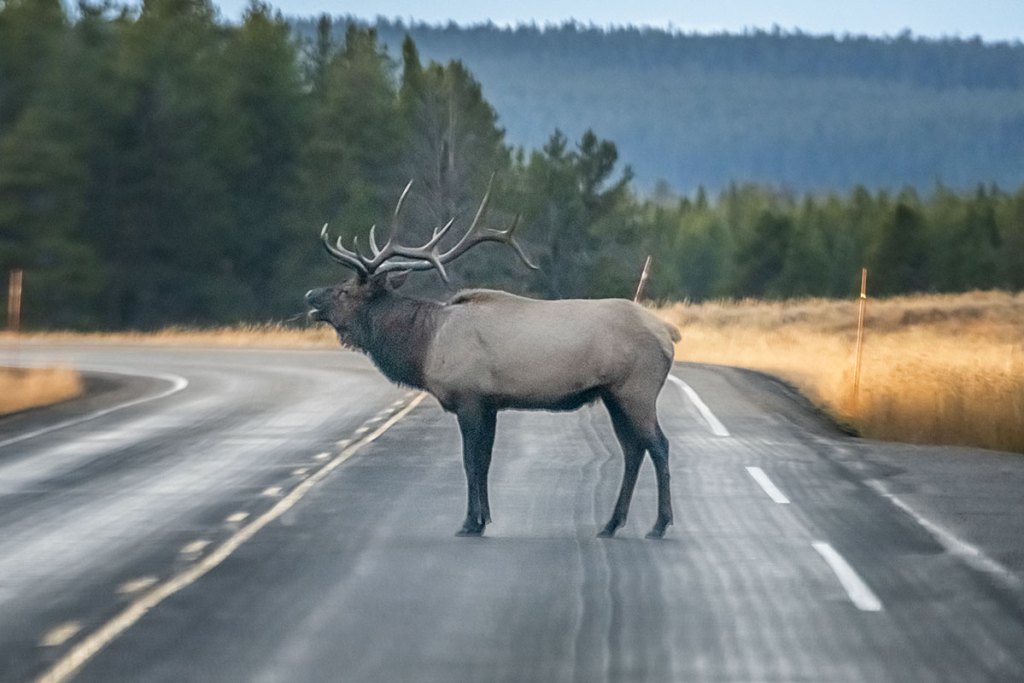The east entrance is less traveled but still has so much to see. The east entrance goes from Cody, Wyoming to Fishing Bridge. Most of the grizzly bears that we saw on this trip were in this area.

Fishing Bridge, East Entrance

We’ve stayed here before. They have large concrete pads with full service. Our power went out intermittently, but someone fixed our pedestal and it was great after that. They don’t have WIFI. Fortunately, our Verizon card worked well here so that we could stream at night.

Part of the east entrance had a fire in 2003 that burned 17,000 acres. It was caused by a lightning strike. Wildfires are actually beneficial to the grizzly bears. The fires open up the canopy, and they provide new nutrients to the soil, which supports really lush vegetation. And, that’s the mainstay for the grizzly bear diet for much of the year.

Fishing Bridge was originally popular for fishing, but fishing is no longer allowed from the bridge itself. Visitors can still fish from the nearby shores of Yellowstone Lake.

Yellowstone Lake with a picnic table view. Yellowstone Lake is the largest high elevation lake above 7,000 feet in North America.

It is roughly 20 miles long and 14 miles wide, with 141 miles of shoreline and a maximum depth of 394 feet.
Sylvan Lake, East Entrance

Sylvan Lake is a beautiful alpine lake located in Yellowstone National Park.

Sylvan Pass was a stunning drive.


Even though we didn’t see many animals at the pass, in the past we’ve seen bighorn sheep and deer.

Eleanor Lake.

Yellowstone Falls is the largest waterfall in the Rocky Mountains. It consists of two major waterfalls on the Yellowstone River. As the Yellowstone river flows north from Yellowstone Lake, it leaves the Hayden Valley and plunges first over Upper Falls of the Yellowstone River and then a quarter mile downstream over Lower Falls of the Yellowstone River, at which point it then enters the Grand Canyon of the Yellowstone, which is up to 1,000 feet deep.
Birds, Hayden Valley








We enjoy birding. It was nice to see a variety including; great blue heron, swan, ferruginous hawks, and ducks.

Lunch at the Canyon diner was delicious.
Elk


The elk is the second-largest species of deer in the world, after the moose. It is native to North America and can be found in a variety of habitats, including forests, grasslands, and mountains. Elk are known for their large size, antlers, and bugling calls. Elk are an important part of the Yellowstone ecosystem.


They provide food for predators such as wolves and bears, and they help to control plant growth.